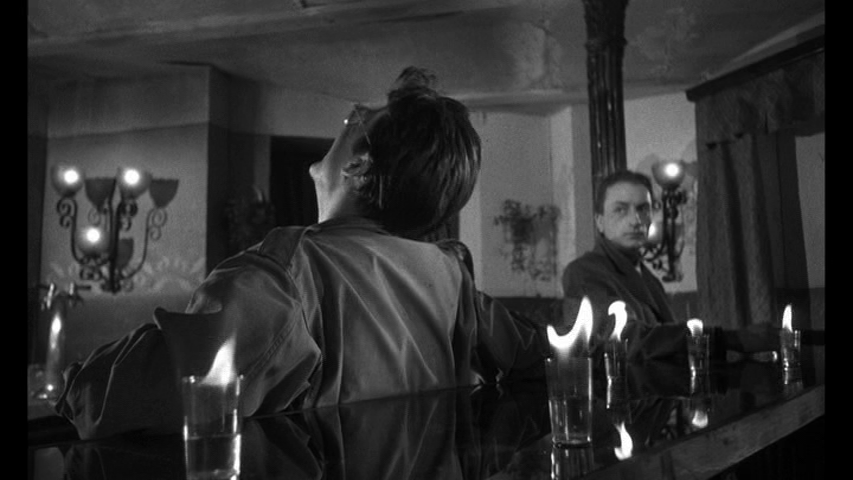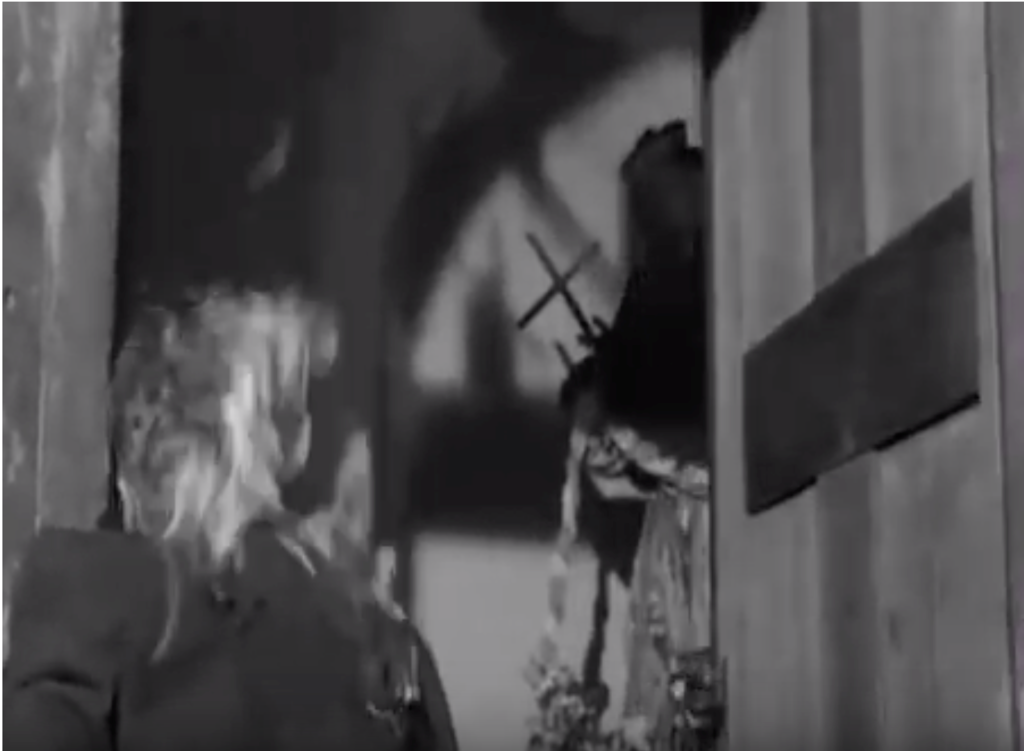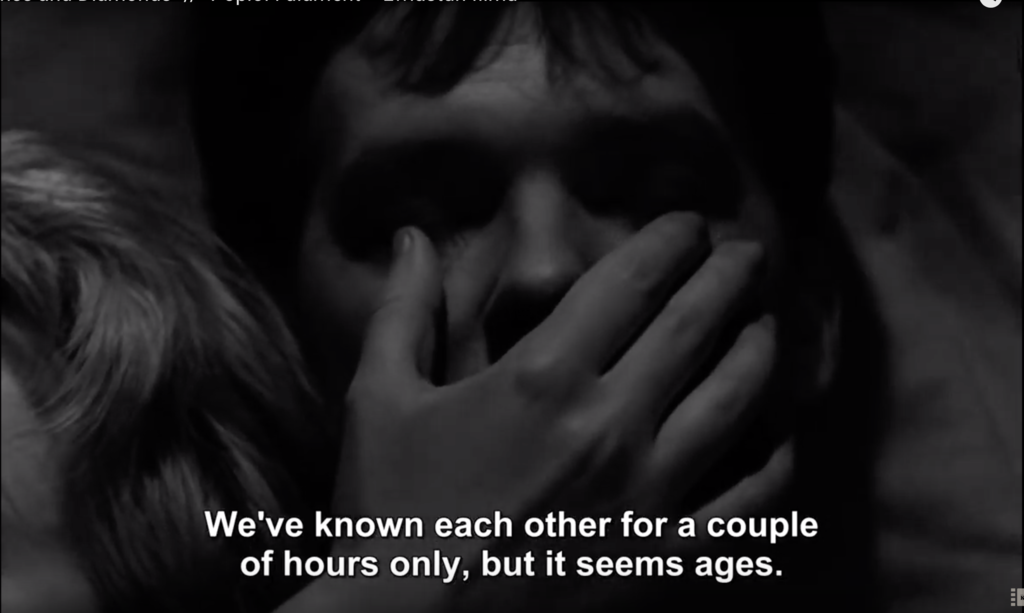
The film Ashes and Diamonds (Andrzej Wajda, 1958) is chock-full of visual motifs that display the movie’s main theme of fate. The film follows Maciek (Zbigniew Cybulski), a young man who is part of the Polish resistance in post-WWII Poland, as he battles with his responsibilities to the Polish resistance versus his desire to live and love. We see several motifs with the use of the cross, fire, and Maciek’s glasses. These elements visually show the audience Maciek’s inability to pursue the life he longs for as fate takes control and determines his ultimate destiny at the end of the film.
The use of fire in the film is unique as it is only used when someone dies or death is mentioned. A prime example is when Maciek lights shots of alcohol on fire for each of his comrades that have been killed in fighting for the rebellion (Figure 1). He lights them individually naming each man, almost as if it is a game with his partner Andrzej (Adam Pawlikowski); and the flames burn as the visual representations of the men’s death. We see fire in the very beginning as well, when Maciek shoots a man in the back so much, the man’s coat bursts into flames as he falls to the ground. What happens next, though, brings in the next visual motif: the cross. As the man collapses to his death, his body pushes open the door to the church and in front of us is the altar with the cross and the Virgin Mary (Figure 2). These two visual motifs together are carefully placed hints that his film is making the point that you can’t escape fate. The entire film, Maciek struggles with following his duty versus following his new love Krystyna (Ewa Kryzewska); but, in the end, his fate has already been decided for him as he follows through with the resistance’s plan only to be killed moments later during an unrelated event. Fire symbolizing the fate of death along with the fate-driven symbol of the cross, or religion, is created through these visual motifs.

The third visual motif is Maciek’s sunglasses. He always wears them, even inside. There is only one scene where he is not wearing the glasses, which is the scene where he and Krystyna spend the night together. There is even a moment when she runs her hands over his eyes, vacant of the sunglasses (Figure 3). The glasses are part of Maciek’s signature “look,” it is the identifying object about him. The removal of them in this scene, however, shows the vulnerability he feels with Krystyna; and perhaps the absence of the visual motif in this scene says more than the constant they play throughout the film. Maciek is blinded by his fate from the rebellion and war, he wears the glasses due to an injury from the war; but with Krystyna his fate does not seem so determined.

Ashes and Diamonds is a film full of visual motifs that bring the film to its next level of depth. The use of fire, the cross, and Maciek’s glasses all play elements in the evolution and determination of his fate. However, in the end it becomes clear that his fate was decided all along.
Author Biography
Olivia Outlaw is a junior at University of North Carolina Wilmington studying film production. She has a particular interest in foreign cinema and specifically studied Eastern European cinema this past semester while in Prague.



































